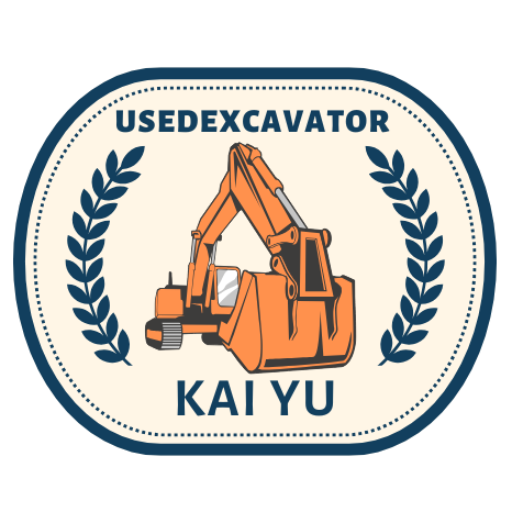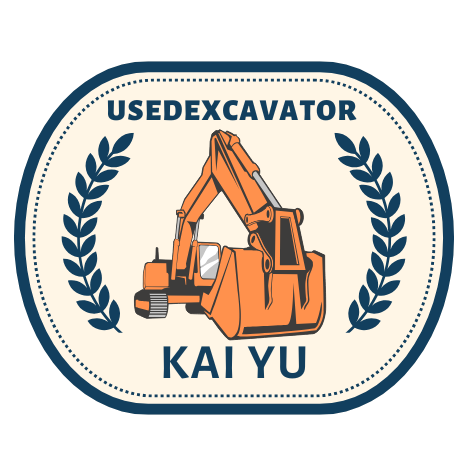Every day, we see massive excavators working hard on construction sites—digging foundations, clearing debris, and performing tasks that keep our cities growing. But have you ever wondered about the life cycle of a used excavator? Where do these mighty machines come from, and where do they go once their work is done? Buckle up as we take you on an exciting journey through the secret life of used excavators—from their birth in the factory to their final mission in the hands of their new owners.
Table of Contents
Chapter 1: The Birth of a Heavy-Duty Machine
The story of every used excavator starts in a factory, where engineers and workers put together a complex assembly of steel, hydraulics, and electronics. It’s here that a brand-new excavator gets its start, built with the power to dig, lift, and move heavy loads. These machines are crafted with precision, designed to last for years while enduring the toughest construction environments.
Once assembled, the excavator is shipped off to a dealer or directly to a construction company. The heavy-duty machinery makes its first appearance on the worksite, where it begins its initial tasks. From clearing land for new developments to digging trenches for underground utilities, these machines play a crucial role in the early stages of construction.
Chapter 2: The First Job – Hard Work and Glory
For the next few years, the excavator works tirelessly on various construction projects. It’s often seen digging foundations for towering skyscrapers, digging holes for massive pipelines, or helping clear debris after demolitions. During this phase, the machine gets put through its paces—running for hours each day, facing all kinds of weather, and enduring the harsh conditions that come with working on a construction site.
Despite the wear and tear, these machines are built to be tough. Regular maintenance helps ensure they keep working at peak performance. However, just like any piece of equipment, they start showing signs of age after several years of heavy use. A few dents here, a few worn-out parts there—but nothing that can’t be fixed.
Chapter 3: The Decision – Time for a Change
Eventually, the time comes for the excavator to retire from its initial job. This could be due to the construction company upgrading to newer machinery or simply because the excavator has reached the point where repairs would cost more than it’s worth. The owner faces an important decision: Should they keep the machine for a backup or sell the excavator?
Many construction companies decide to sell their used excavators through dealers or auctions. Here’s where the magic happens: this used equipment enters a new chapter in its life cycle. The used excavator now becomes part of a vibrant second-hand market where its story is far from over. With proper refurbishing and maintenance, these machines are given a second chance to shine.
Chapter 4: The Second Act – A New Lease on Life
After being resold, the used excavator gets a makeover. Mechanics inspect and refurbish it, replacing worn-out parts, cleaning the components, and sometimes even repainting the machine. Some parts, like the engine or hydraulic systems, may be overhauled to ensure the excavator operates like new.
Once it’s ready, the excavator is listed for sale, often as part of construction equipment for sale or through heavy-duty machinery dealers who specialize in used equipment. Now, this trusted machine finds its way to new owners—whether it’s a small contractor looking to expand their fleet or a large construction company searching for a cost-effective option.
In this second act, the used excavator may work in a variety of environments. It might find a new life on a smaller construction site, helping with landscaping or digging smaller foundations. Alternatively, it could take on major projects just like it did when it was new. Regardless of where it ends up, this second chapter proves that used excavators are far from obsolete—they are simply getting better with age.
Chapter 5: The Final Chapter – A Lifetime of Service
Just like a loyal worker, the excavator continues to serve in the construction industry, often for many years beyond its first life. Even when it’s finally ready to be retired, it may have a new purpose—repurposed for parts or recycled. In some cases, the machine’s valuable components like metal parts and hydraulics can be repurposed, reducing the need for new materials and contributing to a more sustainable construction industry.
In the best-case scenario, this machine has been so well cared for and maintained throughout its life that it can be resold yet again. The lifecycle of a used excavator may even come full circle, continuing to serve in the hands of another user for several decades.
The Takeaway – Why Used Excavators Matter
The life of a used excavator is full of twists and turns, but it’s far from a one-and-done story. From its humble beginnings on the factory floor to its second life on a construction site, these machines demonstrate durability, resilience, and versatility. By choosing a used excavator, you’re not just getting a cost-effective piece of machinery—you’re also contributing to a sustainable cycle that helps reduce waste and conserve resources.
So, the next time you’re in the market for construction equipment for sale, consider the hidden life of a used excavator. It might just be the hero your construction project needs, with years of reliable service ahead of it. And remember, when these heavy-duty machines retire, it’s not the end of their story—just the beginning of their next great adventure.


